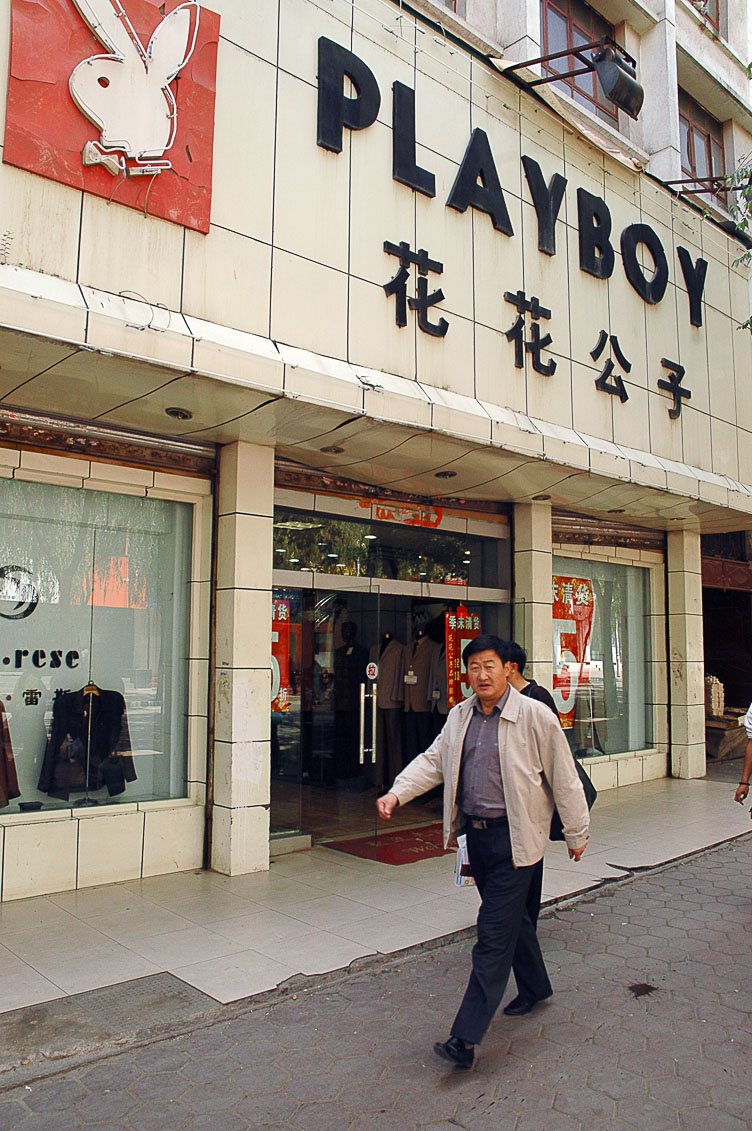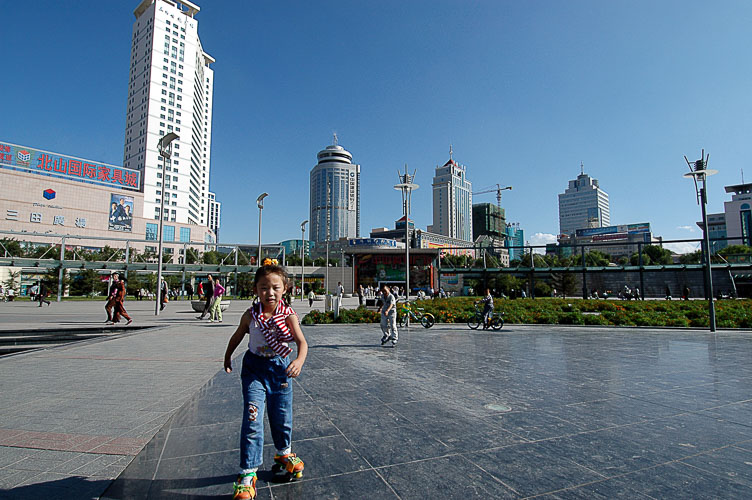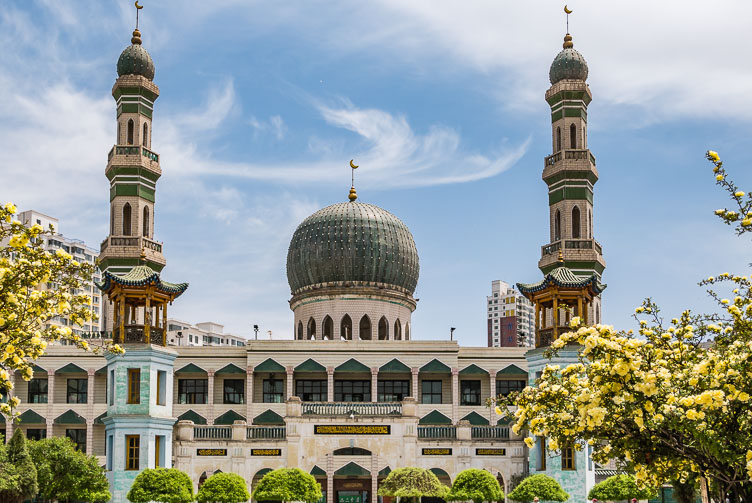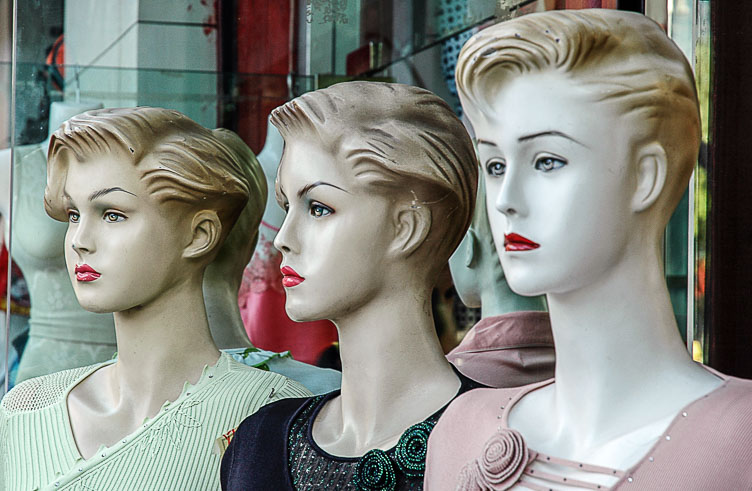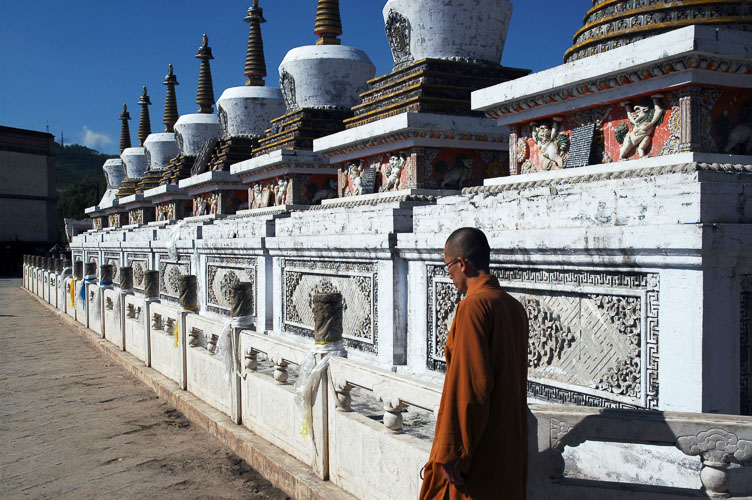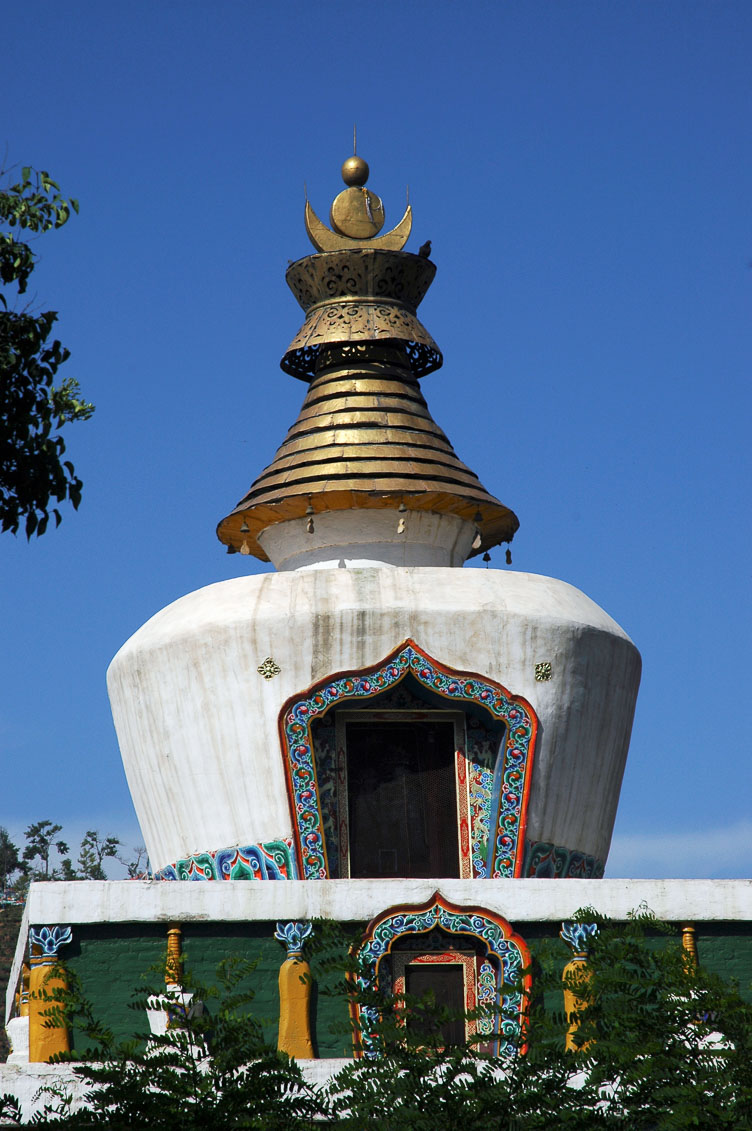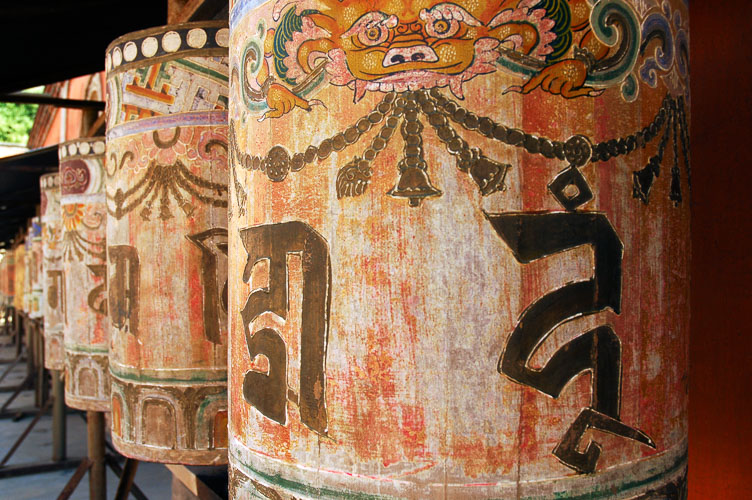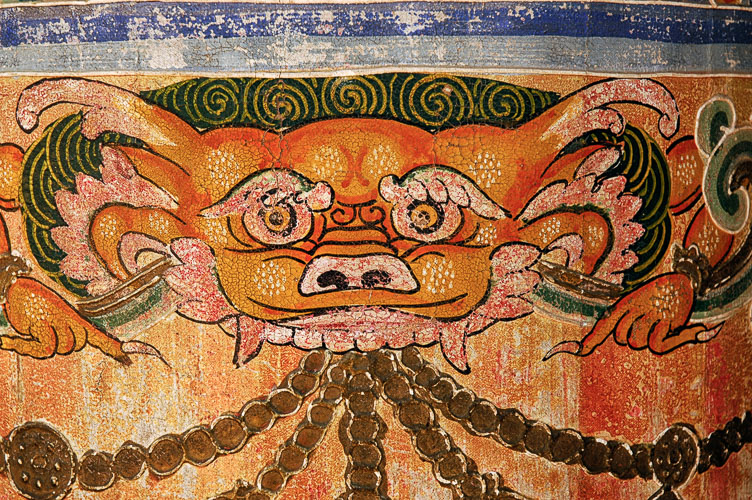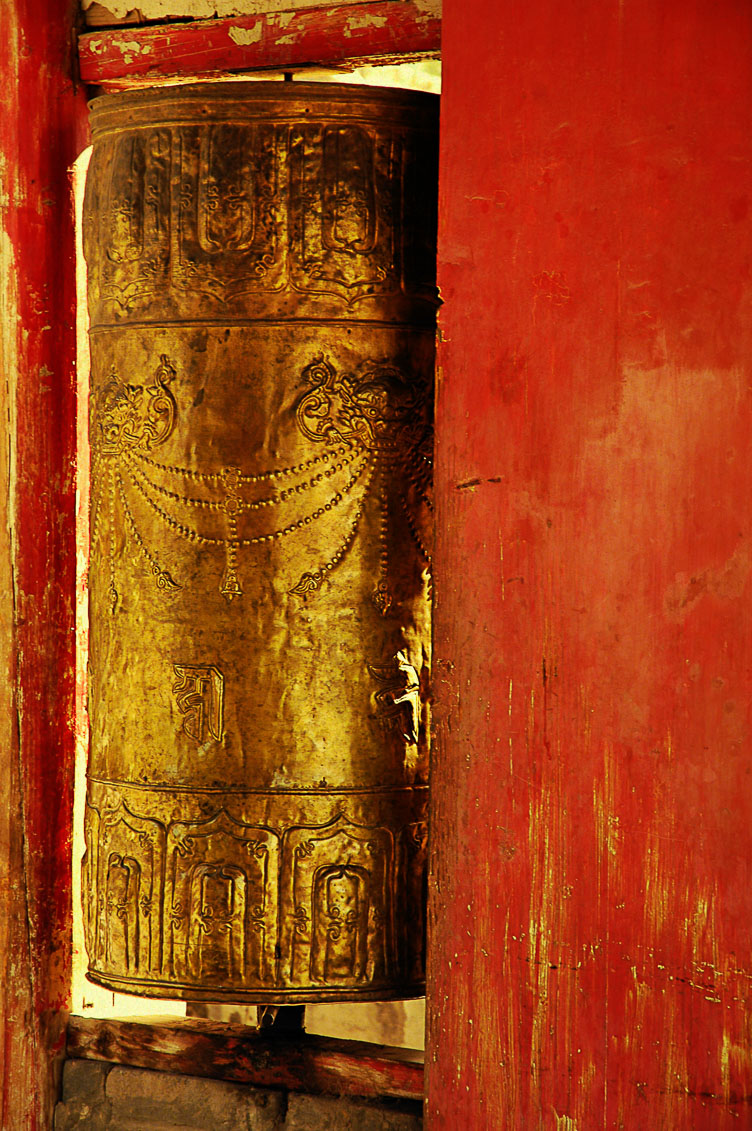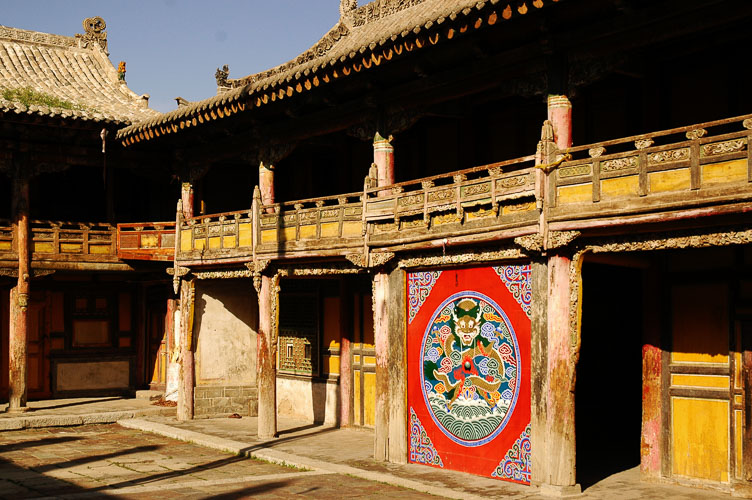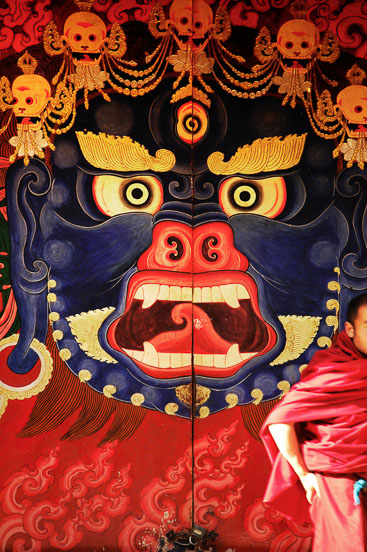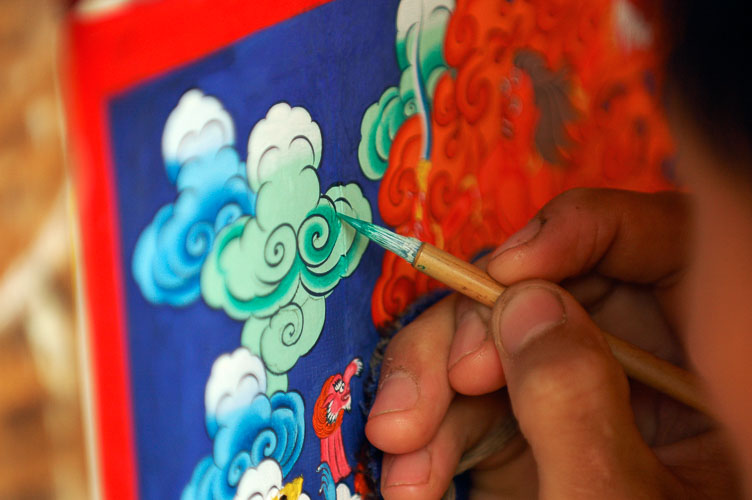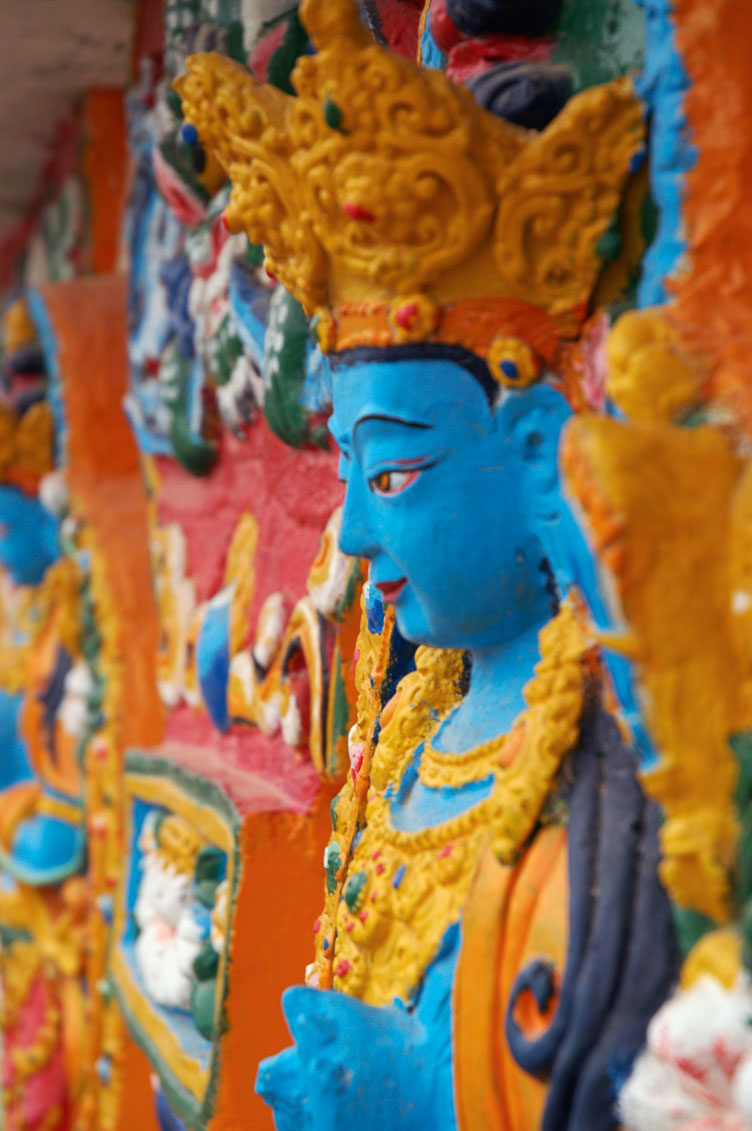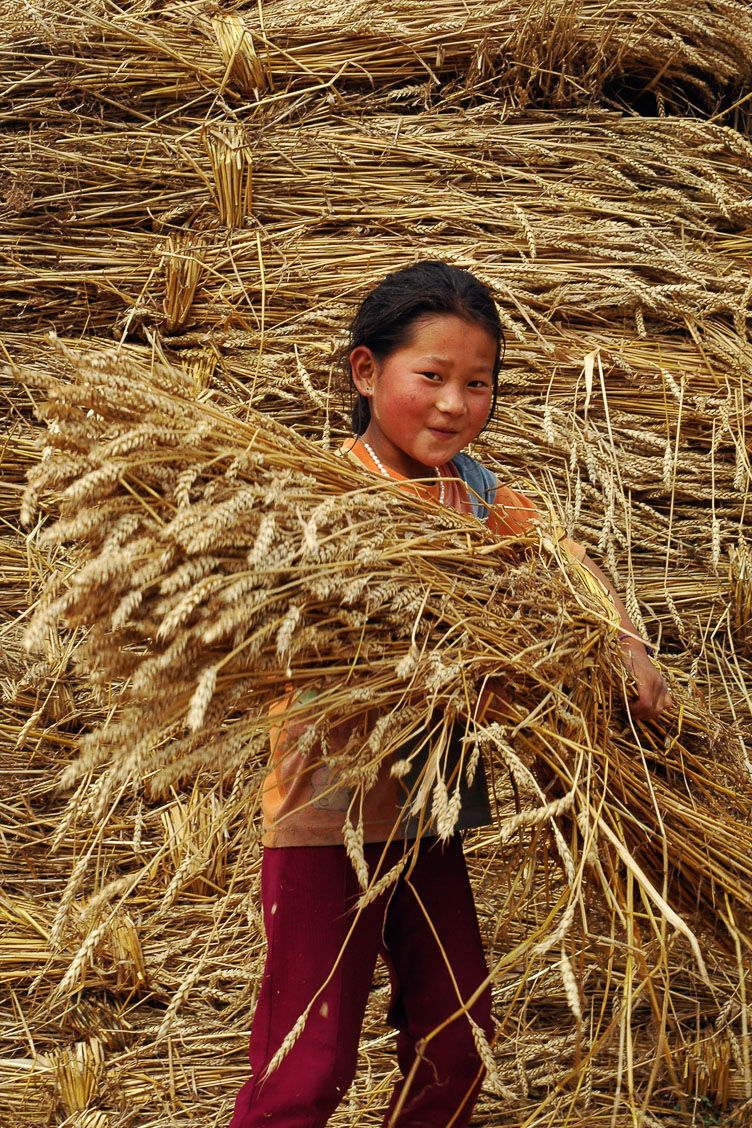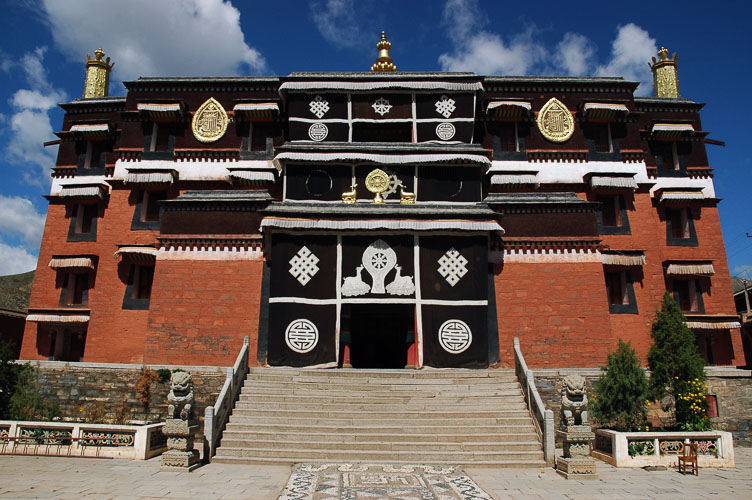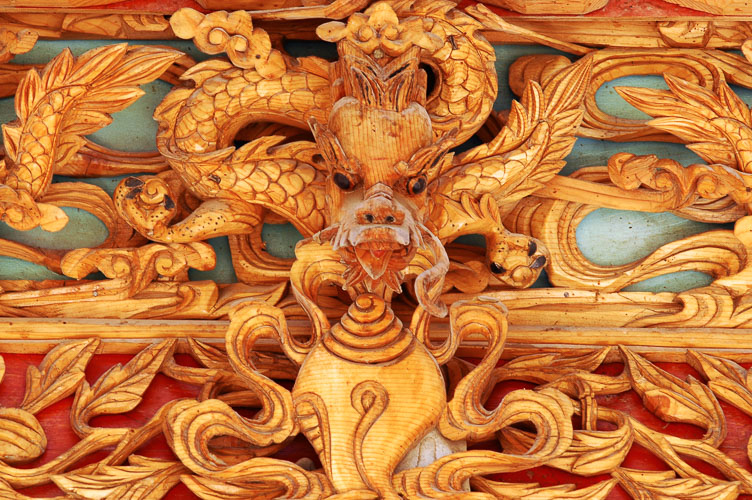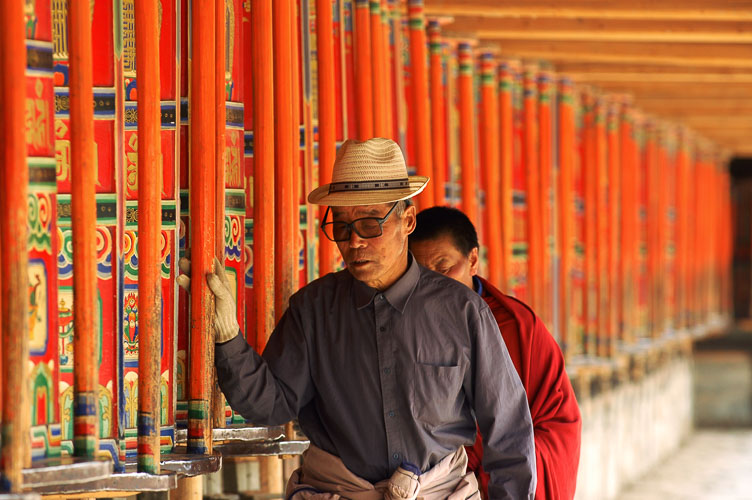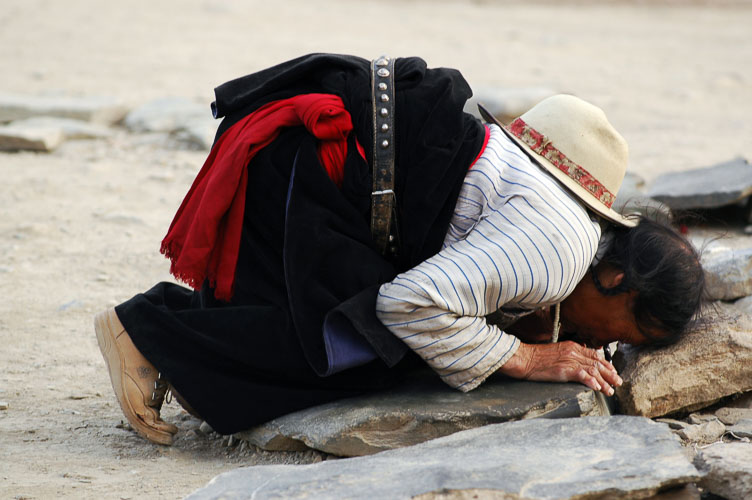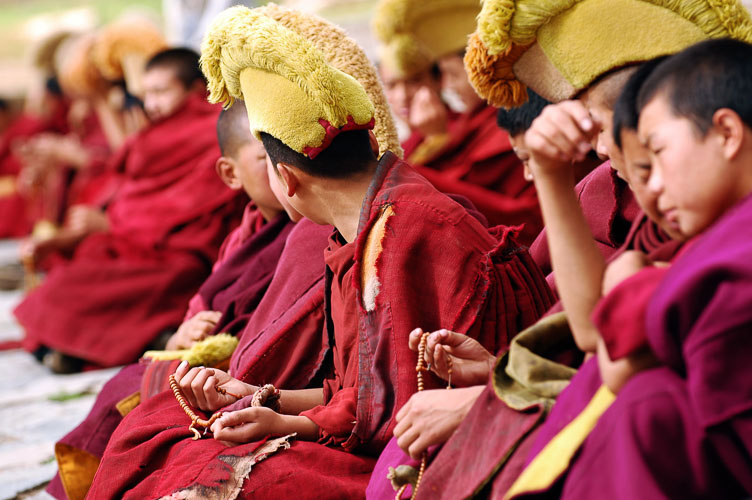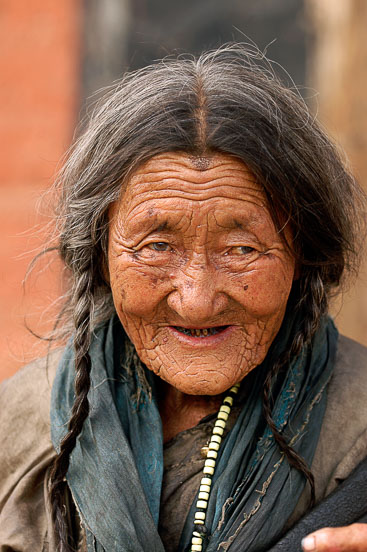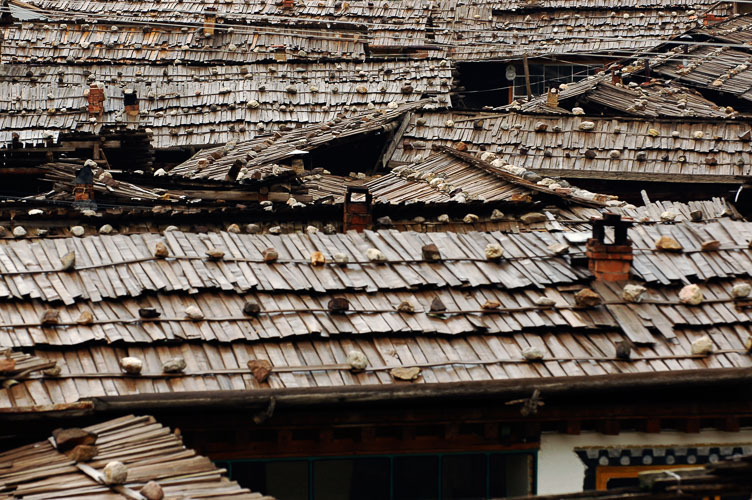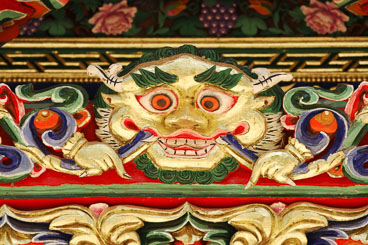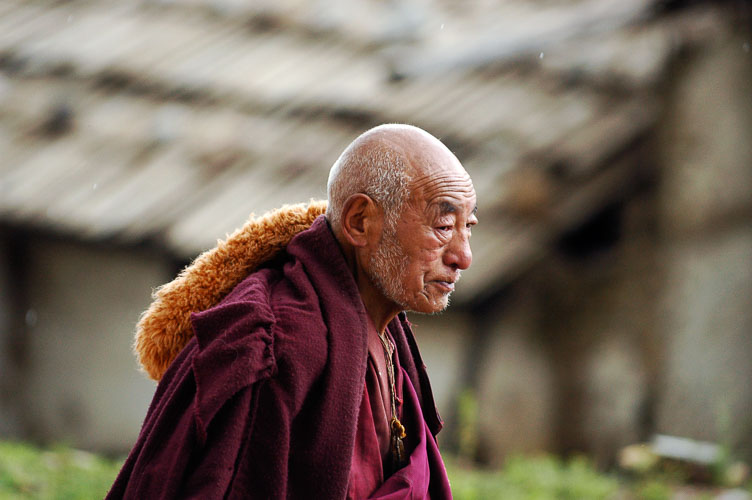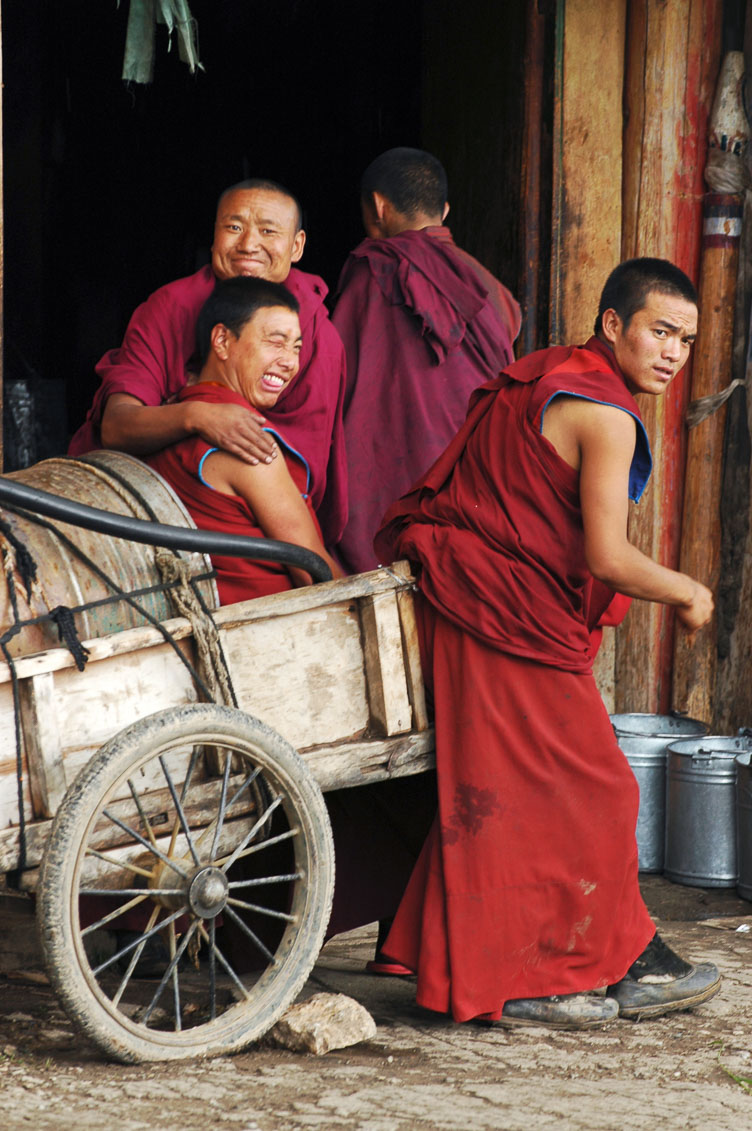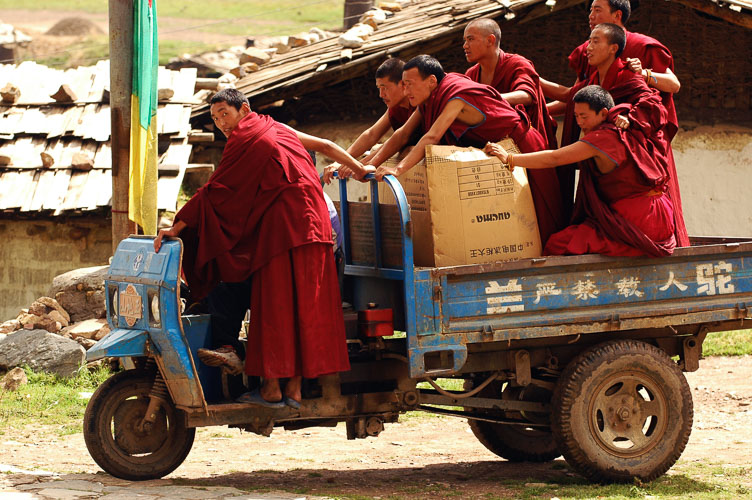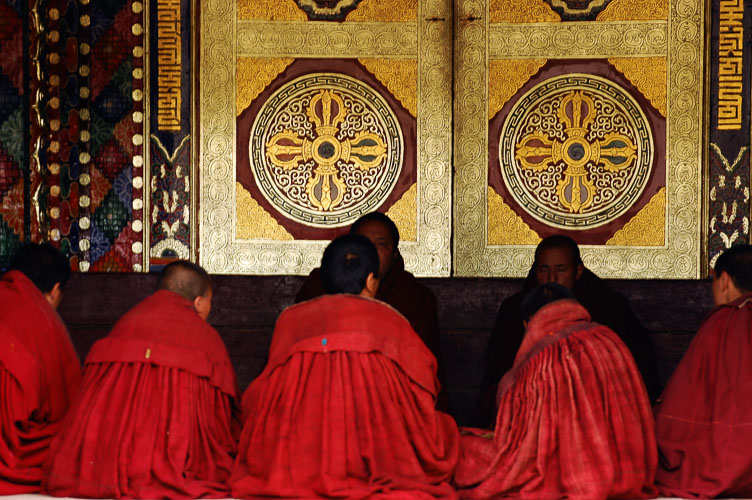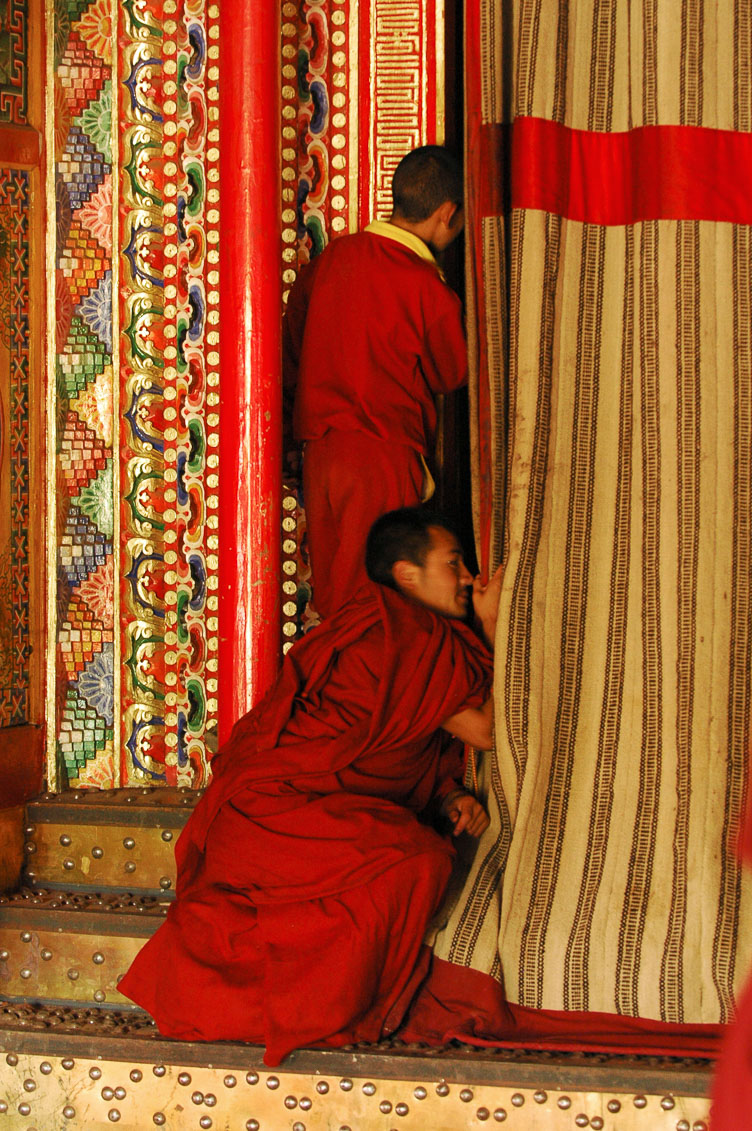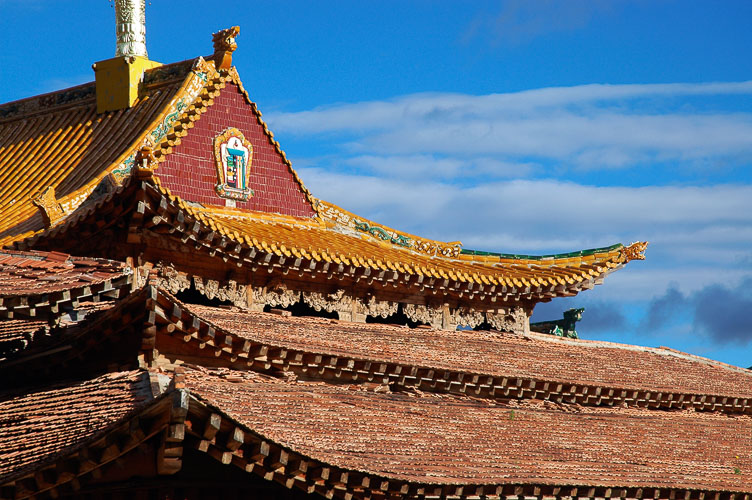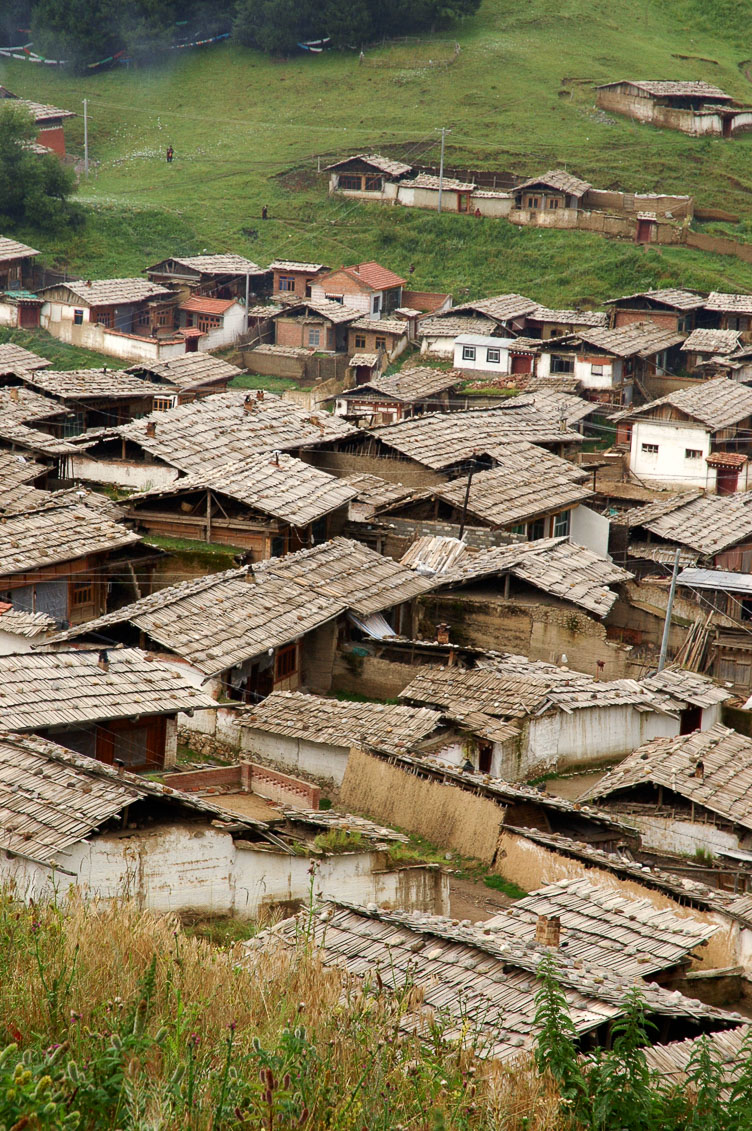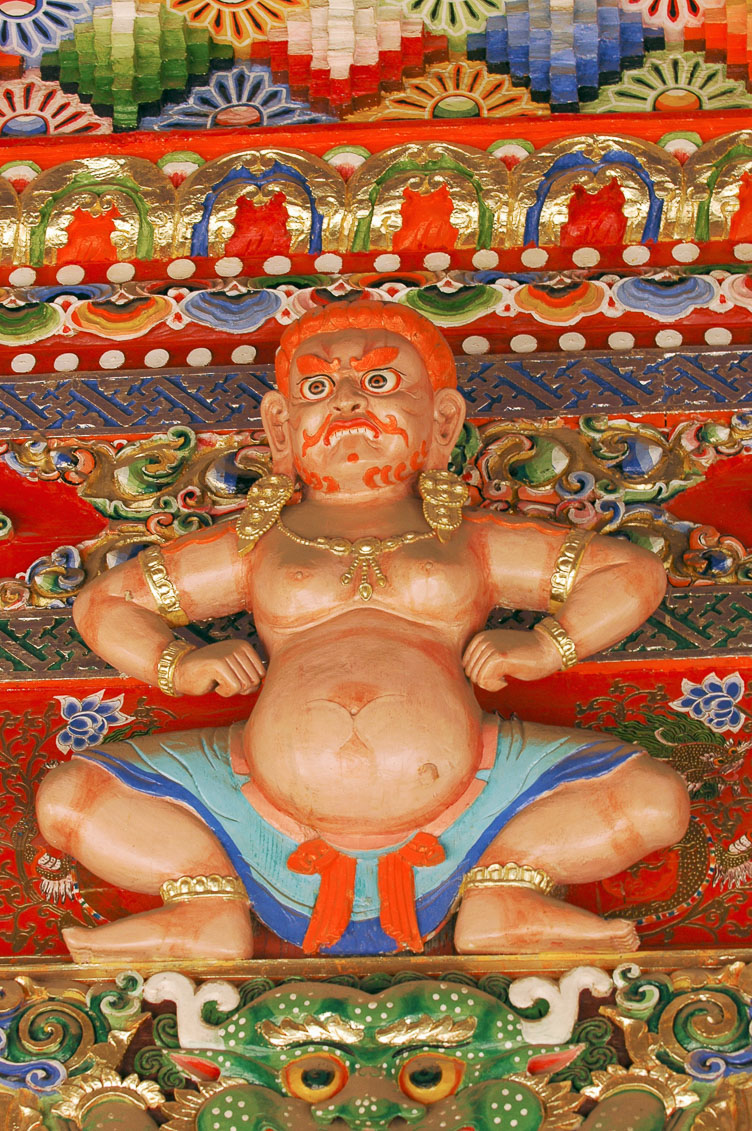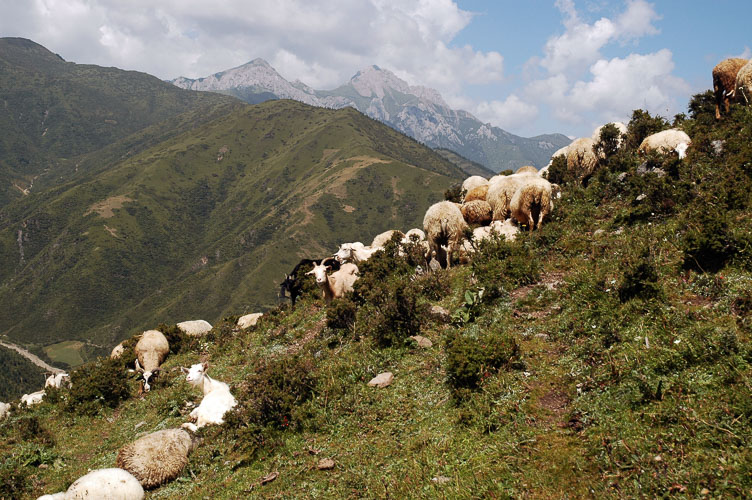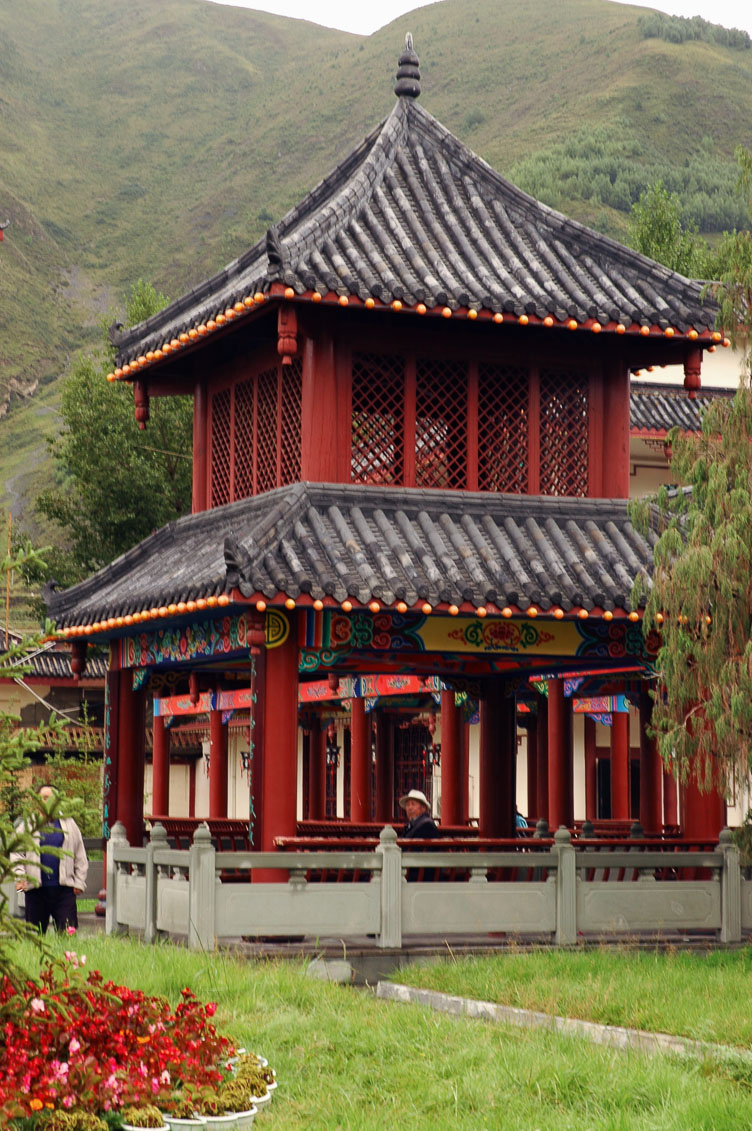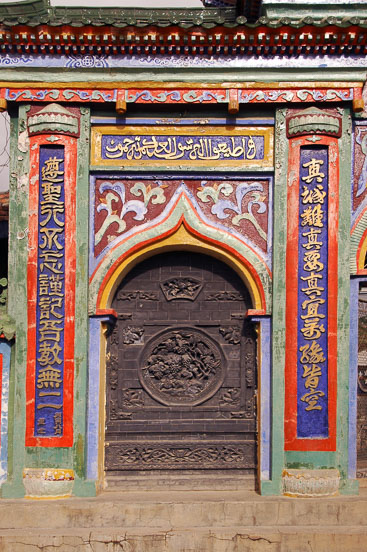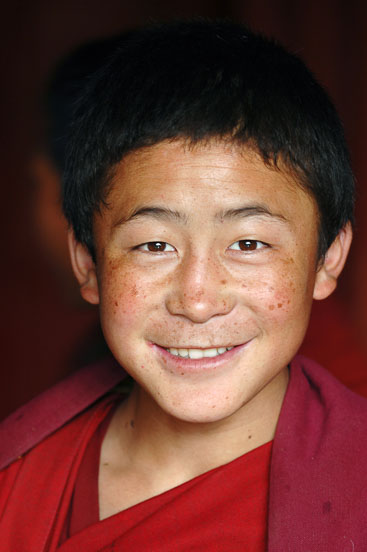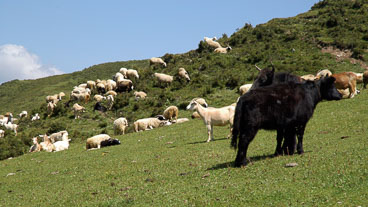From Xining to Tóngrén (to buy a Tanka!) and on to to Xia’he. From there to Langmusi, Songpan for horseriding and finally to Chengdu.
Xining.
A city of two million and hardly any tourists. There are no real sights in Xining, apart from the nearby monastery of Kunbum. But it is an interesting place to explore if you are able to cover long distances by foot. The old meets the new, an abundance of markets and if, you look closer, a lot of details that can make life on the road so much more interesting: Chinese opera in dozens of tea-houses along the river, a food-fair, a large market where blocks of stone in all colors and shapes are sold, street performances and much more fun details.
Kunbum.
The Kunbum monastery is one of the six great monasteries of the Yellow Hat sect of Tibetan Buddhism. Some buildings are open for visitors while others remain closed, thus separating tourism and religion. The numbers of (Chinese) visitors and souvenir shop make that it does not feels as a religious place.
Tongren
The place to watch Tanka's being painted and buy one. Otherwise a relaxed place to hang out with the locals.
Xia’he; the Labrang monastery
Another one of the great six. This monastery houses 1200 monks and is also important because it houses six colleges or institutes where medicine, astrology, law en esoteric Buddhism are taught. The town of Xia’he looks like it is there to support the monastery. Shops sell yellow hats, monk’s robes, craftsmen carve wood for the monastery and pilgrims can buy souvenirs.
Lángmusi
This small town is home to two monasteries and Lesha’s famous 10-inch yakburger. The largest monastery is in fact a complete village, with decorative wooden roofs, that shine nicely when it has rained. There are a few beautifully decorated buildings and also a mosque. The monks appear more down to earth then in most monasteries.
Songpan
A place to go horseriding in the surrounding hills.

